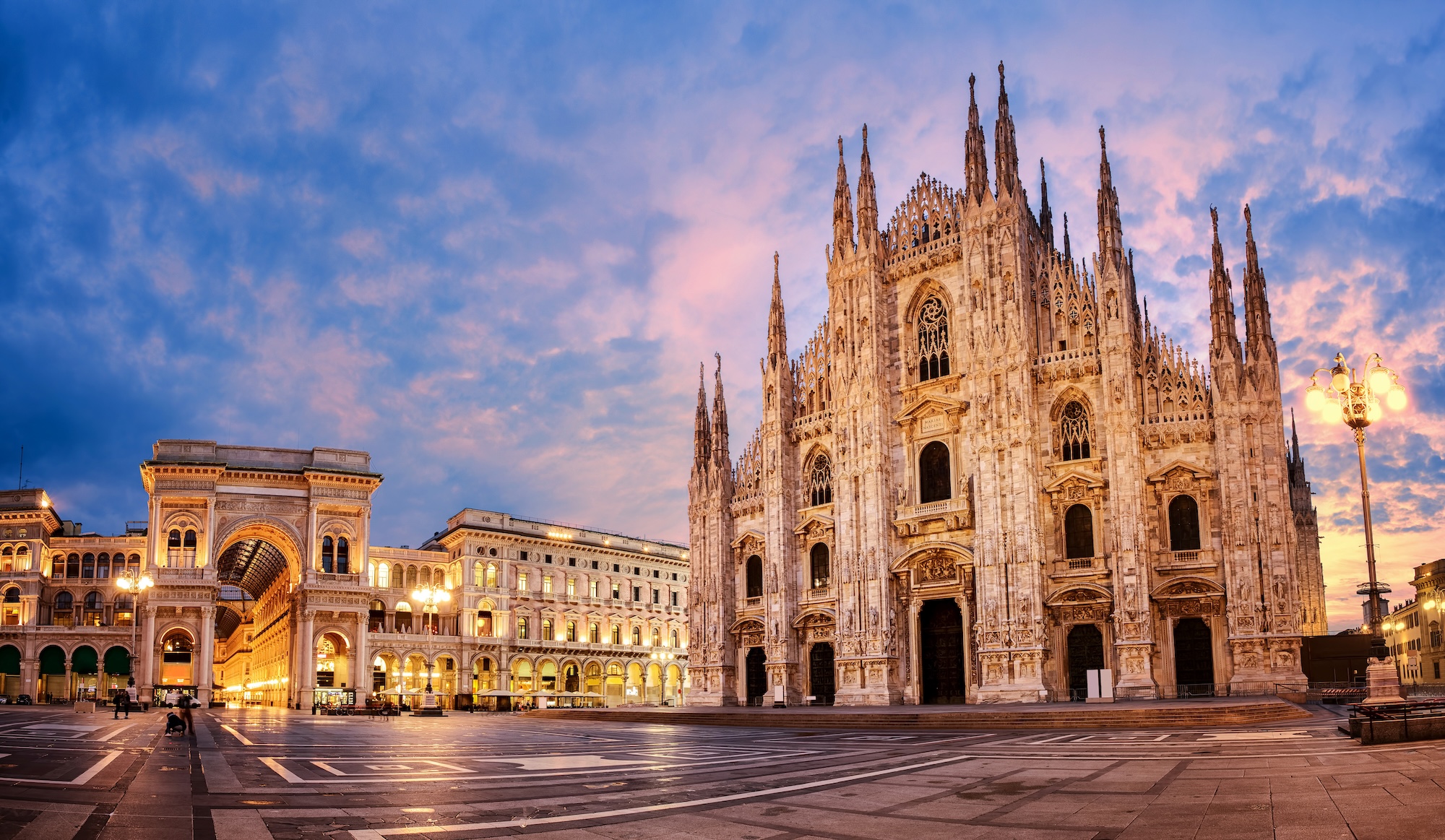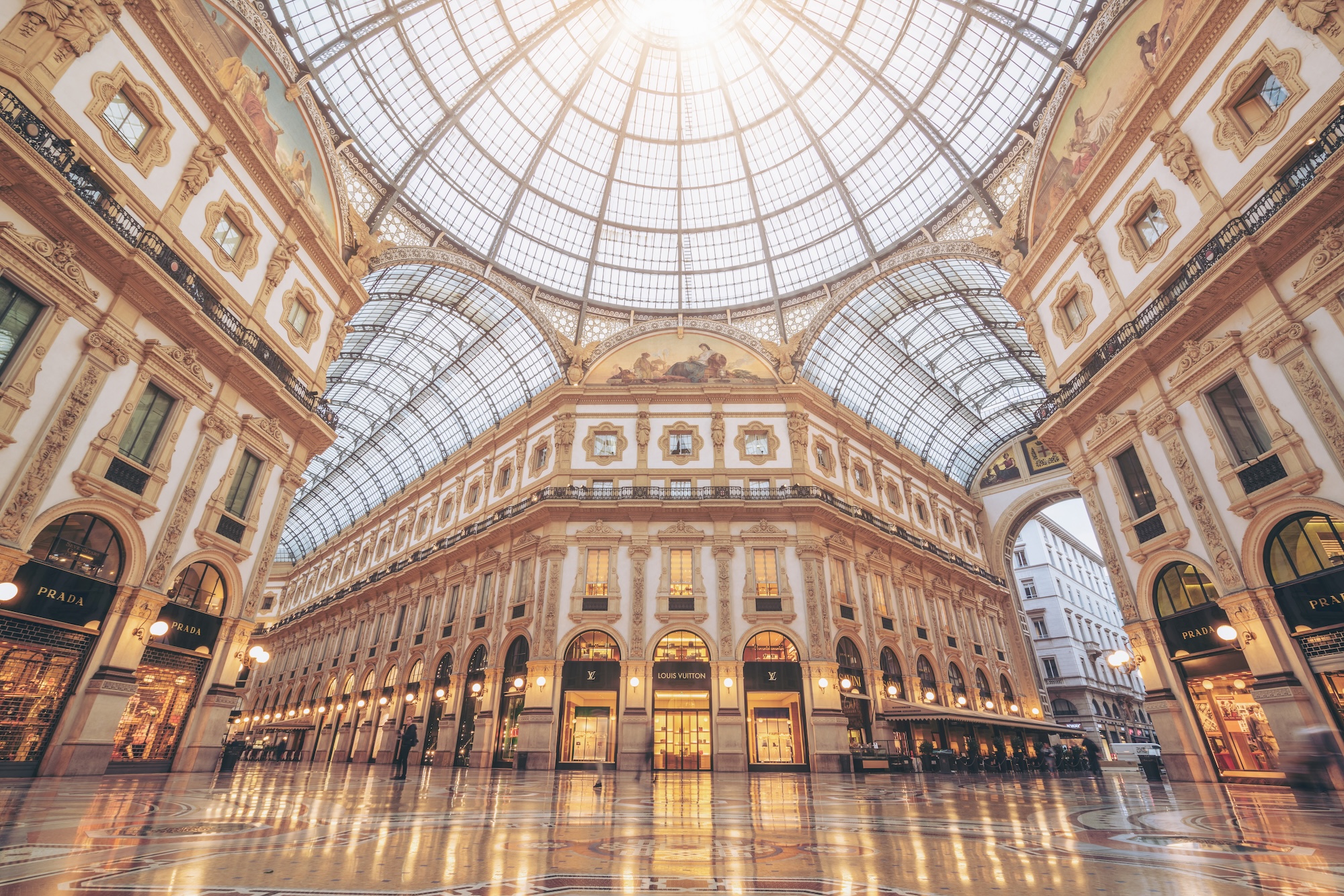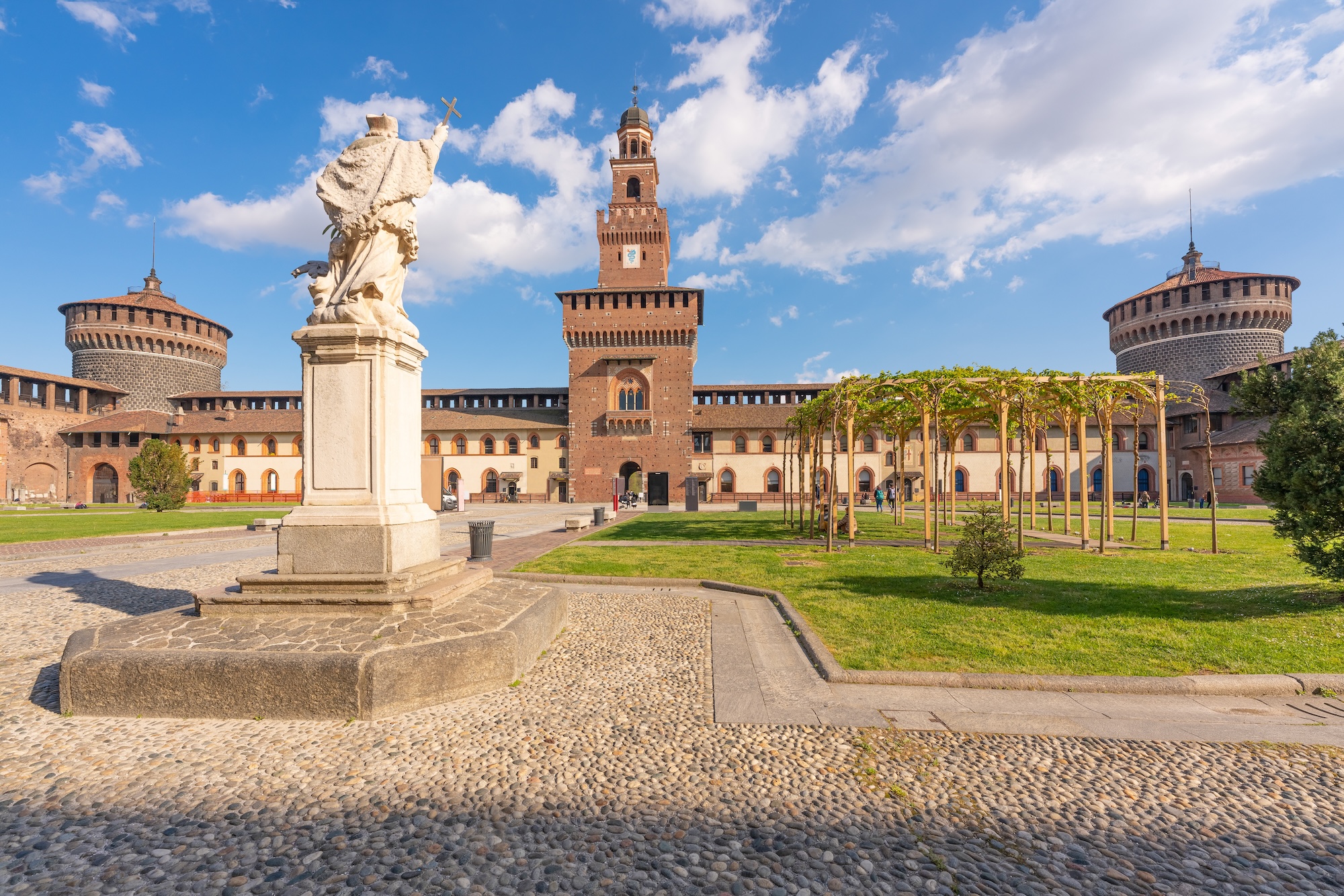
World Travel Tips
What Should You Do in Milan?
Milan is a vibrant metropolis known for its dynamic blend of historic grandeur and cutting-edge innovation. As the fashion and design capital of Italy, Milan welcomes visitors with impressive art, world-class shopping, stunning architecture, and a buzzing culinary scene. Whether you’re drawn to Renaissance masterpieces, soaring cathedrals, or stylish neighborhoods, here are the top 10 attractions that showcase the best of this iconic city.
1. The Duomo di Milano (Milan Cathedral)

The awe-inspiring Duomo di Milano is the heart of Milan and one of the largest and most elaborate Gothic cathedrals in the world. Its spires, statues, and intricate façade create an unforgettable sight, while the rooftop terrace offers sweeping views across the city.
Why visit?
Duomo di Milano is an architectural masterpiece that embodies Milan’s spirit and history. Climbing to the rooftop for panoramic vistas is a highlight for any visitor.
2. Galleria Vittorio Emanuele II

Next to the cathedral stands Galleria Vittorio Emanuele II, a stunning 19th-century shopping arcade with soaring glass ceilings, mosaic floors, and luxury boutiques.
Why visit?
Galleria Vittorio Emanuele II is not only a shopper’s paradise but also a perfect place to admire elegant architecture, sip an espresso, and experience the pulse of Milanese life.
3. Sforza Castle (Castello Sforzesco)

The imposing Sforza Castle is a Renaissance fortress and former royal residence now housing several museums and art collections, including works by Leonardo da Vinci and Michelangelo.
Why visit?
Sforza Castle offers a deep dive into Milan’s history, art, and culture, all set within beautiful courtyards and gardens.
4. The Last Supper (Santa Maria delle Grazie)
One of the world’s most famous paintings, The Last Supper by Leonardo da Vinci, is preserved in the refectory of Santa Maria delle Grazie, a UNESCO World Heritage Site.
Why visit?
The Last Supper is a once-in-a-lifetime opportunity to see a masterpiece that changed the course of art history—reservations are essential.
5. Brera District
The artistic Brera District is a charming neighborhood filled with cobblestone streets, art galleries, bohemian cafes, and the renowned Pinacoteca di Brera art museum.
Why visit?
Brera District is the soul of Milan’s creative scene and an ideal place to wander, shop for unique finds, or enjoy classic Milanese cuisine.
6. Teatro alla Scala
Regarded as one of the world’s greatest opera houses, Teatro alla Scala dazzles with its ornate interiors and prestigious performances.
Why visit?
Teatro alla Scala is a must for music and culture lovers—tour the museum or experience the magic of an Italian opera or ballet.
7. Navigli Canals
The picturesque Navigli Canals area is lined with lively bars, trendy restaurants, and colorful facades, creating a vibrant atmosphere, especially at sunset.
Why visit?
Navigli Canals offer a unique glimpse of Milan’s historic waterways and a fantastic spot for evening aperitivo or weekend markets.
8. Pinacoteca di Brera
Housed in a former monastery, the Pinacoteca di Brera is Milan’s premier art gallery, showcasing masterpieces by Raphael, Caravaggio, and other Renaissance greats.
Why visit?
Pinacoteca di Brera is a treasure trove for art enthusiasts, presenting one of Italy’s finest collections in an atmospheric setting.
9. Quadrilatero della Moda (Fashion District)
Known as the Quadrilatero della Moda, this elegant district features designer boutiques, flagship stores, and luxurious showrooms by the biggest names in fashion.
Why visit?
Quadrilatero della Moda is a dream come true for fashion lovers and a perfect place to window-shop or spot the latest trends.
10. Parco Sempione
Located behind the castle, Parco Sempione is Milan’s green oasis—a large, beautifully landscaped park ideal for a stroll, picnic, or bike ride.
Why visit?
Parco Sempione is the perfect escape from the city’s bustle, with tranquil lakes, playgrounds, and views of both the castle and the iconic Arco della Pace.
Seasonal Recommendations
☀️ Summer (June–August): Summer is the busiest and most vibrant season in Milan, with locals and visitors making the most of long, sunny days and average temperatures ranging from 75°F to 88°F (24°C to 31°C). Outdoor cafés buzz with energy, evening aperitivo culture thrives, and the city hosts numerous open-air concerts and events. While popular attractions like the Duomo di Milano and Navigli Canals can be crowded, summer evenings are perfect for leisurely strolls and people-watching. Be prepared for some heat and humidity, and note that August may see some local shops closed for holidays.
🌸 Spring (March–May): Spring is one of the best times to visit Milan, as mild temperatures between 52°F and 70°F (11°C to 21°C) bring the city back to life after winter. Flowers bloom in parks and gardens, and the atmosphere feels lively but not overwhelming. Outdoor terraces fill with people, and it’s a lovely time for wandering the Brera District or relaxing in Parco Sempione. Spring also means fewer crowds at major sights and a packed cultural calendar, making it ideal for sightseeing and soaking up Milan’s fashionable spirit.
🍁 Autumn (September–November): Autumn is a favorite for many, thanks to crisp air, changing foliage, and comfortable temperatures that typically range from 55°F to 72°F (13°C to 22°C). The city is lively with fashion shows and exhibitions, and the pace is pleasantly relaxed compared to summer. It’s a great time to enjoy cozy cafés, explore art at the Pinacoteca di Brera, or wander the elegant streets of the Quadrilatero della Moda. The mix of golden leaves and stylish Milanese energy creates an inviting atmosphere for sightseeing and shopping.
❄️ Winter (December–February): Winter in Milan is the quietest season, with temperatures averaging 33°F to 48°F (1°C to 9°C). The city sparkles with festive lights and holiday markets, especially around the Duomo di Milano. While some days can be chilly or foggy, it’s a magical time to visit museums like Sforza Castle or enjoy the opera at Teatro alla Scala. After the New Year, Milan slows down, offering a more peaceful experience for travelers who don’t mind bundling up and exploring the city’s rich indoor attractions.
Milan Excursions
Tips for Your Visit
Getting Around
- Use Public Transport: Milan’s metro, trams, and buses are efficient and cover most major attractions. Consider a day pass for unlimited rides.
- Walk in the City Center: Central Milan is very walkable, and strolling lets you discover charming neighborhoods and hidden gems.
- Watch Out for ZTL Zones: The city has restricted traffic zones (ZTL) where driving is limited—always check signs if you’re renting a car.
Local Cuisine
- Taste Milanese Classics: Don’t miss signature dishes like risotto alla Milanese and cotoletta (breaded veal cutlet).
- Enjoy Aperitivo: Experience Milan’s famous pre-dinner tradition—enjoy a drink and complimentary snacks in lively bars, especially in the Navigli area.
- Visit Local Markets: Explore food markets such as Mercato Centrale for authentic local flavors and fresh ingredients.
Language
- Italian is the Main Language: While English is spoken in most tourist areas, learning a few basic Italian phrases will go a long way.
- Politeness Matters: Greet people with a friendly “Buongiorno” (good morning) or “Buonasera” (good evening) when entering shops or restaurants.
Safety
- Be Mindful of Pickpockets: Stay alert in crowded places, especially around the Duomo di Milano and on public transport.
- Use Official Taxis: Only take licensed taxis from official stands or book via reputable apps to avoid scams.
- Emergency Numbers: For police, fire, or medical assistance, dial 112 in Italy.
These tips will help you make the most of your Milan adventure, savor local experiences, and stay safe as you explore this stylish Italian city!
3 Popular Restaurants
The restaurant scene in Milan is an exciting blend of old-world tradition and contemporary innovation. From elegant Michelin-starred dining rooms to lively trattorias and trendy aperitivo bars, the city’s culinary landscape reflects both Milan’s rich heritage and its global outlook. Whether you’re craving classic Milanese specialties, creative tasting menus, or international flavors, Milan offers a memorable dining experience for every traveler.
1. Ristorante Cracco
Location: Galleria Vittorio Emanuele II, 20121 Milano MI, Italy View On Map
Cuisine: Contemporary Italian (Fine Dining)
Why It’s Popular: Led by celebrity chef Carlo Cracco, Ristorante Cracco is celebrated for its inventive reinterpretations of traditional Italian cuisine, set in an elegant dining room within the iconic Galleria. With its Michelin star, impeccable service, and stylish ambiance, it’s a must-visit for food lovers looking to experience the modern face of Milanese gastronomy.
2. Trattoria Trippa
Location: Via Giorgio Vasari, 1, 20135 Milano MI, Italy View On Map
Cuisine: Traditional Italian (Modern Trattoria)
Why It’s Popular: Trattoria Trippa has become a local favorite for its warm, welcoming atmosphere and creative takes on classic Italian comfort food. Chef Diego Rossi’s focus on high-quality ingredients and bold flavors draws both Milanese locals and travelers alike. Its signature veal Milanese and affordable, ever-changing menu make reservations a must.
3. Ristorante Il Luogo di Aimo e Nadia
Location: Via Privata Raimondo Montecuccoli, 6, 20147 Milano MI, Italy View On Map
Cuisine: Modern Italian (Michelin 2-Star)
Why It’s Popular: A Milan institution, Il Luogo di Aimo e Nadia is renowned for its refined interpretations of Italian regional cuisine and its dedication to culinary excellence. With two Michelin stars, the restaurant blends tradition with creativity, offering artfully presented tasting menus and top-tier service in an elegant yet welcoming setting.
Tips for Dining in Milan
Milan is renowned for its sophisticated food scene, offering everything from elegant Michelin-starred restaurants and historic trattorias to trendy cafes and lively aperitivo bars. With roots in both traditional Lombard cuisine and cosmopolitan innovation, dining in Milan is an experience every visitor should savor. Here are key tips to make the most of your meals in Italy’s style capital.
Important: Milan Tap Water is Safe to Drink—But Bottled Water is Often Served
Milan’s tap water is clean, strictly regulated, and safe to drink throughout the city. Most locals drink it at home, and you can confidently fill your bottle from hotel or public fountains. However, in restaurants, it’s customary to be served bottled water (still or sparkling), and asking for tap water may not always be well received.
Tip: Don’t hesitate to drink tap water when available—especially at your accommodation or public fountains—but expect to pay for bottled water at most dining establishments.
1. Book a Table in Advance
Many of Milan’s top restaurants, especially those in the city center or known for their iconic Milanese dishes, fill up quickly—particularly for dinner and on weekends.
Tip: Reserve your table ahead of time via phone, the restaurant’s website, or apps like TheFork. For popular spots, try booking at least a few days in advance.
2. Embrace Aperitivo Culture
Aperitivo is a beloved Milanese tradition: early evening drinks served with complimentary snacks or a generous buffet, perfect for socializing and sampling local flavors.
Tip: Head to the Navigli Canals or the Brera District for the best aperitivo experiences. Buy a drink, and you’ll often enjoy access to a variety of small bites.
3. Sample Classic Milanese Dishes
Milan is famous for its risotto alla Milanese (saffron risotto), cotoletta alla Milanese (breaded veal cutlet), and ossobuco. Traditional pastry like panettone is also a must-try.
Tip: Look for local trattorias and osterias that highlight these specialties. Don’t be afraid to ask your server for recommendations!
4. Dinner Starts Later Than You Might Expect
Italians tend to dine later, with many restaurants opening for dinner around 7:30 or 8:00 PM. Lunch hours are usually 12:30–2:30 PM.
Tip: Plan for a leisurely evening and don’t be surprised if you’re the first to arrive. Enjoy a pre-dinner stroll or aperitivo if you’re hungry before local dining hours.
5. Tipping is Appreciated but Not Required
Service is typically included in the bill as a “coperto” or cover charge, but leaving a small tip for excellent service is always appreciated.
Tip: Round up the bill or leave some loose change—5-10% is more than enough. No need to tip as much as you would in the US.
6. Expect to Pay for Bread and Water
Most restaurants automatically serve bread and bottled water with your meal, both of which will appear as small charges on your bill.
Tip: If you don’t want bread or bottled water, let your server know when you order. Tap water is rarely offered in restaurants.
7. Don’t Rush—Enjoy the Experience
Dining in Milan is a relaxed affair. Meals are meant to be savored, and you’ll rarely feel hurried by staff.
Tip: Don’t expect your bill until you ask for it (“Il conto, per favore”). Take your time and soak in the ambiance.
8. Try Local Wines
The Lombardy region is known for excellent wines, including sparkling Franciacorta and rich reds from Valtellina.
Tip: Ask for the house wine (“vino della casa”)—it’s often high quality and very affordable by the glass or carafe.
9. Explore Food Markets for Authentic Flavors
For a local experience, visit markets like Mercato Centrale or Mercato di Via Fauche for fresh produce, street food, and regional products.
Tip: These markets are great for lunch, snacks, or picking up edible souvenirs to bring home.
10. Be Aware of Regional Specialties and Seasonal Menus
Many Milanese menus change with the seasons to highlight the freshest local ingredients.
Tip: Ask your server about daily specials or seasonal offerings—they’re often the best way to taste Milan at its peak.
Conclusion
Whether you’re sharing aperitivo by the canals, indulging in risotto alla Milanese, or enjoying a leisurely meal in a hidden trattoria, Milan’s food scene is as stylish and diverse as the city itself. With these tips in mind, you’ll dine like a true Milanese—savoring every bite and every moment. Buon appetito!








